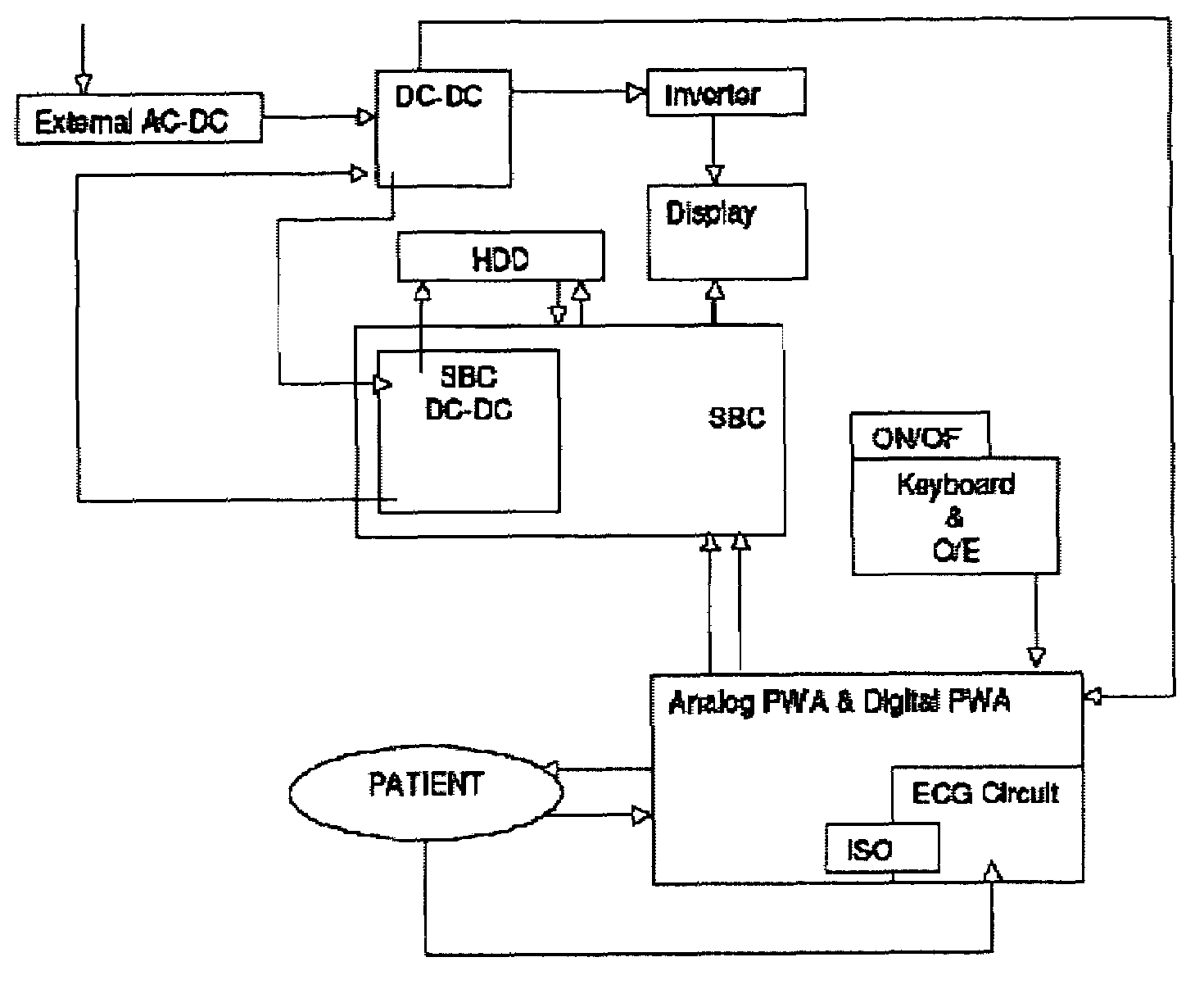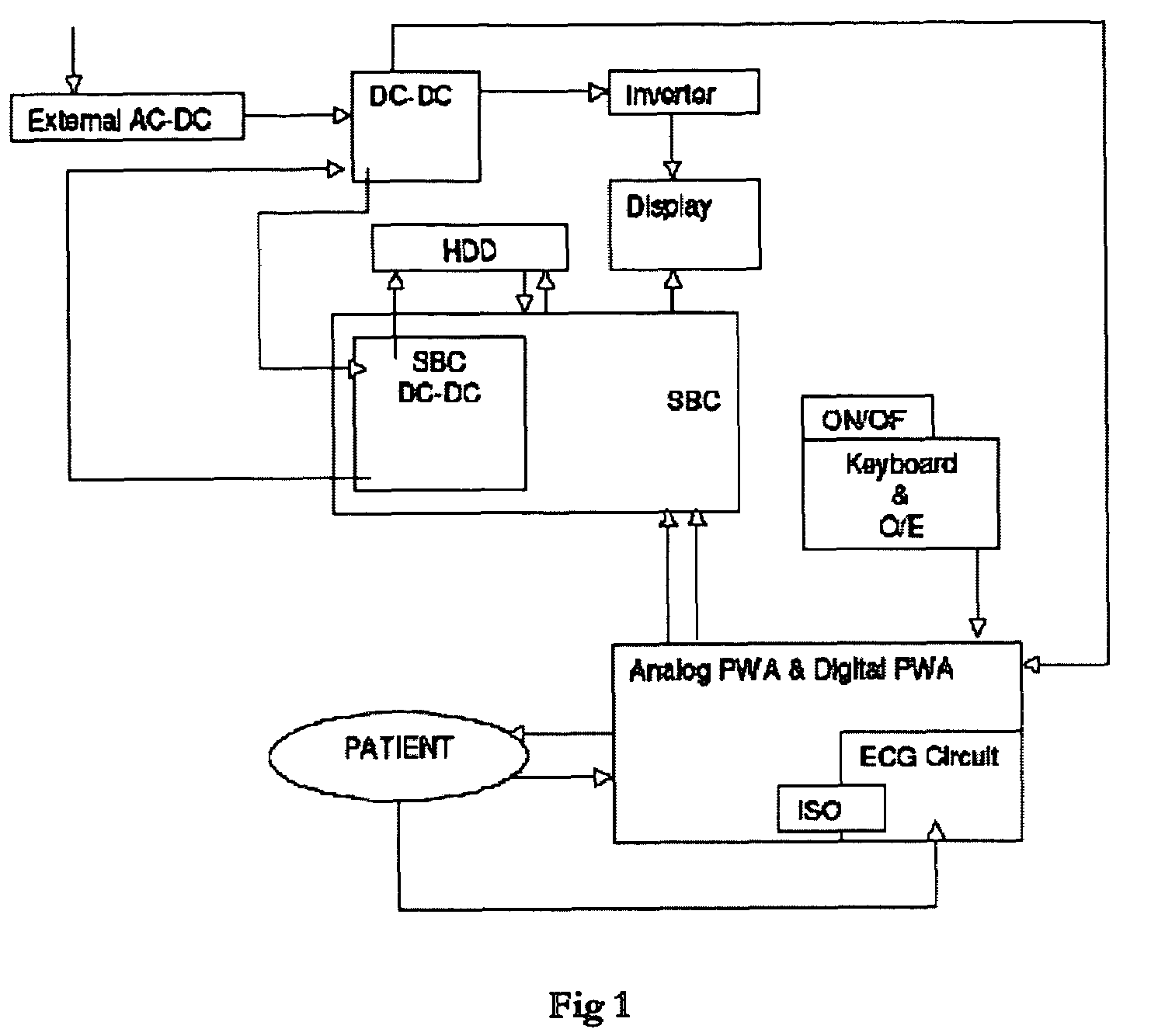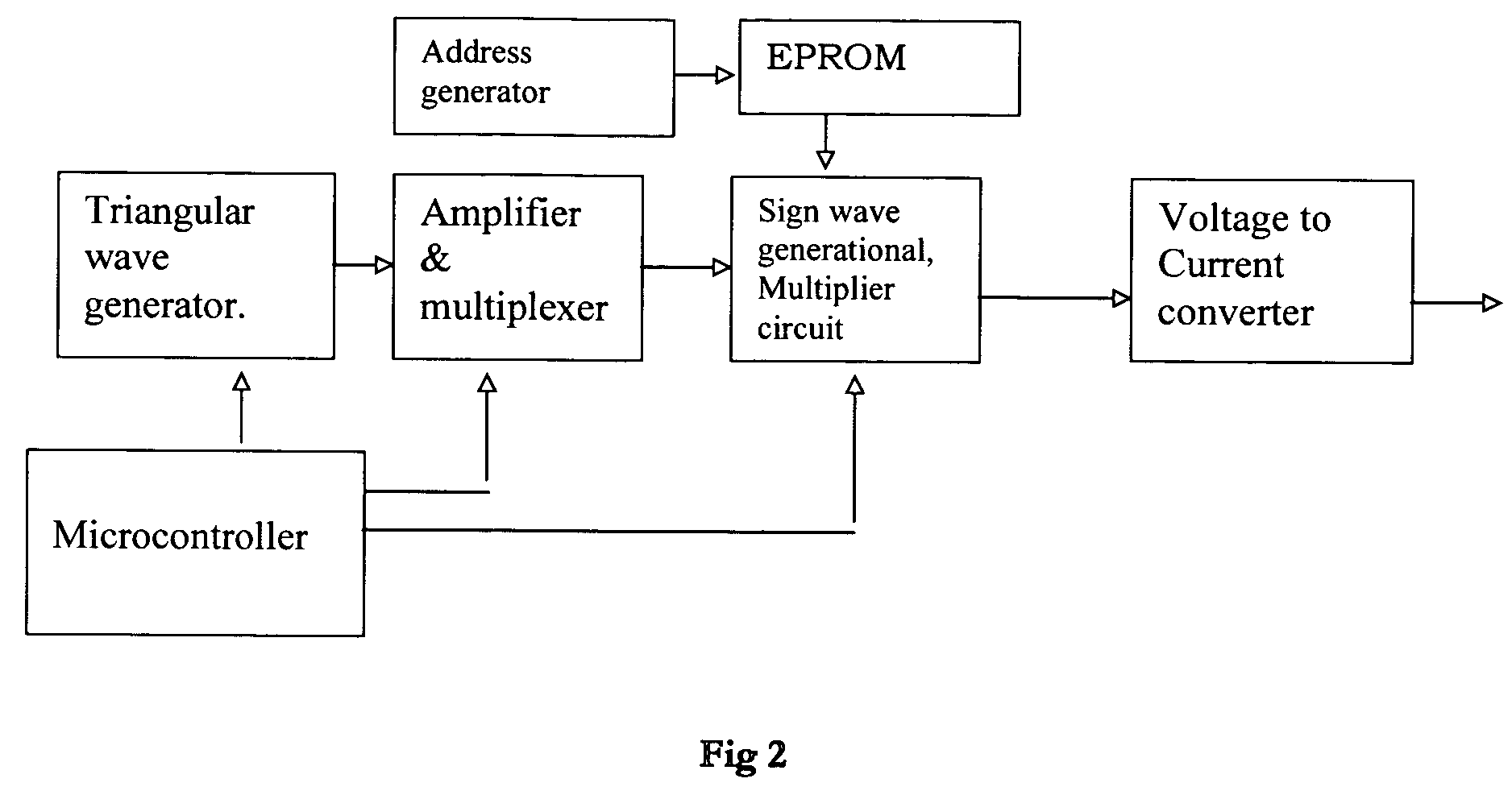Cardiac output monitoring system and method using electrical impedance plythesmography
a monitoring system and electrical impedance technology, applied in the field of non-invasive medical monitoring systems, can solve the problems of inability to accurately detect the infection of the site of catheter insertion, the risk of affecting the accuracy of the measurement, and the inability to accurately detect the infection of the blood vessels of the lung, so as to reduce the complexity of the analog circuitry and facilitate retrieval and re-analysis.
- Summary
- Abstract
- Description
- Claims
- Application Information
AI Technical Summary
Benefits of technology
Problems solved by technology
Method used
Image
Examples
Embodiment Construction
[0031]The present invention relates to a medical monitoring system and more particularly to a method and portable device for monitoring volume of fluid associated with the heart. In other words, the invention is used to measure the volume of blood pumped by the heart per minute, namely the blood flow index. As these fluids are electrically conductive, charges in their volumes can be detected by the technique of impedance plythesmography wherein the electrical impedance of a part of the body is measured by imposing an electrical current across the body and measuring the associated voltage difference.
[0032]The system of the invention provides an apparatus for monitoring cardiac output using impedance plythesmographic techniques and tracing vascular resistance using a dedicated menu option. Thus different options are provided for working of the monitor. The method uses tetrapolar electrode systems. One pair of electrodes is utilised for sensing voltage drop along the current path that ...
PUM
 Login to View More
Login to View More Abstract
Description
Claims
Application Information
 Login to View More
Login to View More - R&D
- Intellectual Property
- Life Sciences
- Materials
- Tech Scout
- Unparalleled Data Quality
- Higher Quality Content
- 60% Fewer Hallucinations
Browse by: Latest US Patents, China's latest patents, Technical Efficacy Thesaurus, Application Domain, Technology Topic, Popular Technical Reports.
© 2025 PatSnap. All rights reserved.Legal|Privacy policy|Modern Slavery Act Transparency Statement|Sitemap|About US| Contact US: help@patsnap.com



